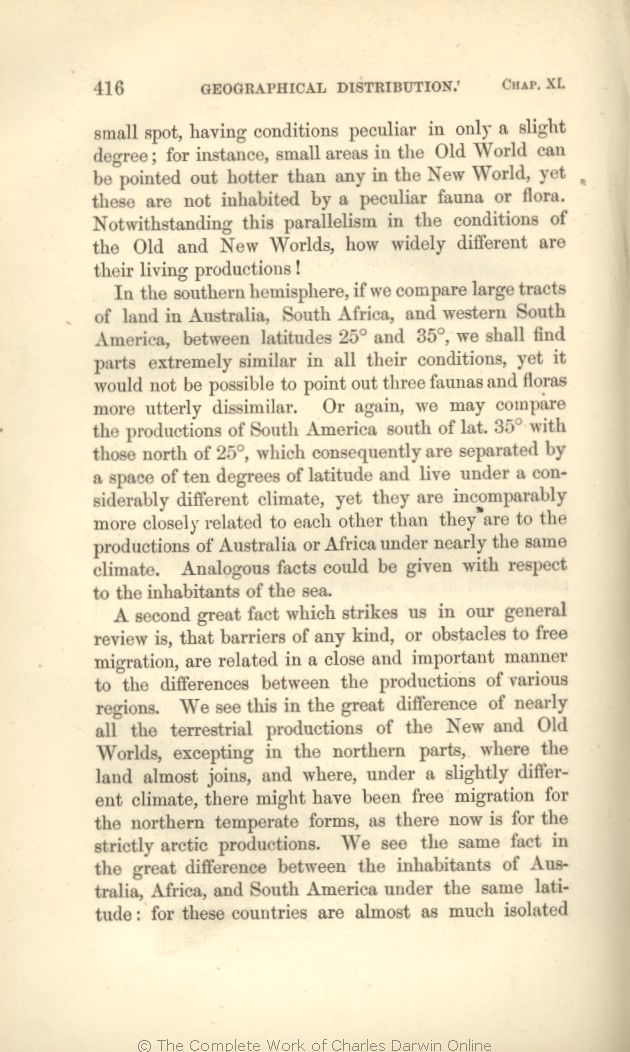small areas
in the Old World can | in the Old World can 1861 1866 |
| in the Old World could 1859 1860 |
| can 1869 1872 |
| hotter than any 1859 1860 1861 1866 |
| OMIT 1869 1872 |
| New 1859 1860 1861 1866 | | Old 1869 1872 |
| World, 1859 1860 1861 1866 | | World 1869 1872 |
| yet 1859 1860 1861 1866 |
| hotter than any in the New World, but 1869 |
| hotter than any in the New World; but 1872 |
| peculiar 1859 1860 1861 1866 | peculiar 1869 1872 |
| or flora. 1859 1860 1861 1866 |
| different from that of the surrounding districts; for it is very rare to find a group of organisms confined to a small area, having conditions peculiar in only a slight degree. 1869 |
| different from that of the surrounding districts; for it is rare to find a group of organisms confined to a small area, of which the conditions are peculiar in only a slight degree. 1872 |
| parallelism 1859 1860 1861 1866 | | general parallelism 1869 1872 |
|
|
In the southern hemisphere, if we compare large tracts of land in Australia, South Africa, and western South America, between latitudes
25° | 25° 1866 1869 | | 25° 1859 1860 1861 1872 |
| 35°, 1866 1869 | | 35°, 1859 1860 1861 1872 |
| Or 1859 1860 1861 1866 1869 | | Or, 1872 |
| again, 1866 1869 1872 | | again 1859 1860 1861 |
| 35° 1866 1869 | | 35° 1859 1860 1861 1872 |
| 25°, 1866 1869 | | 25°, 1859 1860 1861 1872 |
| are separated by a space of ten degrees of latitude and live under a 1866 |
| inhabit a 1859 1860 1861 |
| are separated by a space of ten degrees of latitude and are exposed to 1869 1872 |
| climate, yet they are 1866 |
| climate, and they will be found 1859 1860 1861 |
| conditions, yet they are 1869 |
| conditions; yet they are 1872 |
| other 1861 1866 1869 1872 | | other, 1859 1860 |
| climate. 1860 1861 1866 1869 1872 |
| climate. Analogous facts could be given with respect to the inhabitants of the sea. 1859 |
|
|
A second great fact which strikes us in our general review is, that barriers of any kind, or obstacles to free migration, are related in a close and important manner to the differences between the productions of various regions. We see this in the great difference
of | of 1859 1860 1861 1866 1869 | | in 1872 |
| latitude: 1859 1860 1861 1866 1869 | | latitude; 1872 |
|









